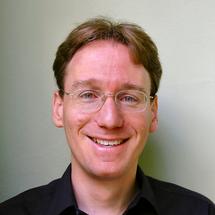Speaker: Ted Levin
Title: Sakha’s One Modality of Case Assignment
Location: 32-D461
Time: Tuesday, Sept 20, 1-2pm
Baker and Vinokurova (2010) adopt a Chomskyan theory of case assignment to account for the realization of case in Sakha. They suggest that case is assigned within the narrow syntax, and that the Case Filter (Chomsky and Lasnik 1977) is real. However, they must also propose that a configurational wrinkle be added to the theory of Chomsyan case assignment to accurately account for the distribution of accusative and dative case. Specifically, accusative and most instances of dative are dependent cases. They are realized on an NP given the relative position of another NP, meeting certain requirements, within an appropriate domain. Their configurational rule is given in (1).
| (1) | a. | If there are two distinct NPs in the same VP-phase such that NP1 c-commands NP2,
then value the case feature of NP1 as dative unless NP2 has already been marked for
case. |
| b. | If there are two distinct NPs in the same phase such that NP1 c-commands NP2, then
value the case feature of NP2 as accusative unless NP1 has already been marked for
case. |
In (1), functional heads determine the appropriate domain, and thus only play an indirect role in assigning these case markers. Conversely, the realization of nominative and genitive case is directly determined by functional heads as is expected. Baker and Vinokurova note that nominative case is only assigned when subject agreement is realized on the verb. The co-occurrence of agreement and case morphology prompts the rule for nominative and genitive assignment given in (2).
| (2) |
If a functional head F C {T, D} has unvalued phi-features and an NP X has an unvalued case
feature (and certain locality conditions hold), then agreement happens between F and X, resulting
in the phi-features of X being assigned to F and the case associated with F (nominative or genitive) being assigned to X.
|
While the hybrid system advocated by Baker and Vinokurova captures the facts of case in Sakha, it is my goal to sketch the beginnings of a strictly Marantzian account of the data. As we shall see, such an exercise requires some alterations to Marantz’s original theory. I incorporate a version of (1) into the disjunctive hierarchy of morphological case assignment to treat both dative and accusative cases as dependent, and I adopt a unique view of what items are assigned case. Specifically, an NP which undergoes movement is assigned case more than once. Each trace (or copy) of the moved item is assigned case according to the case disjunctive hierarchy. Which case(s) is pronounced is subject to cross-linguistic parametric variation. This second modification has been shown to be effective in accounting for other complex case phenomena (Levin 2010). Further, a purely Marantzian account must follow Bobaljik (2008) in treating agreement as a post-syntactic operation which follows case assignment. In this way, I suggest that it is not the presence of agreement morphology which indicates the presence of nominative morphology, but that the presence of nominative case conditions the presence of agreement morphology.

